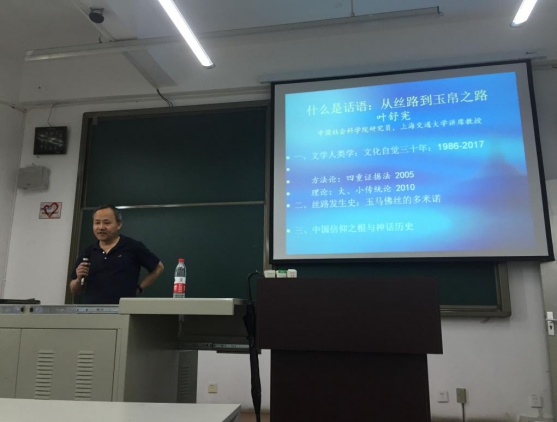On May 12, 2017, Ye Shuxian, the researcher from Chinese Academy of Social Sciences and the professor of Shanghai JiaoTong university, gave an lecture for teachers and students of School of Humanities in Xipu campus. The topic of this lecture is “What is utterance: from the silk road to the jade road.” The lecture was hosted by professor Duan Congxue from School of Humanities.
First of all, professor Ye briefly introduced cultural anthropology to students. He talked about “big tradition” and“small tradition” in culture which means the age without characters and the age with characters. Meanwhile, he referred to three-level encoding in culture. The first level was finished in prehistoric times by some images. The second level was the emergence of Chinese characters. And the third level means early scriptures like Zhou Yi and ShangShu. It is the three-level encoding that determined our way of writing and thinking.
Professor Ye showed the method of four ways evidence by the popular book Wolf Totem and academic book Bear Totem, which is one of the research manners in cultural anthropology. He stated that we should get out of utterance’s control when researching history and culture.
Subsequently, professor Yeintroduced “the root of Chinese beliefs and myth history”. Myth is a key factor to Chinese culture and people. We do not knowthat we are actuallyliving in theenvironment that was subject to ideas in myth. We should try our best to learn about the China that we barely know.
At last, professor Ye took the Silk Road’s history for an example. He explained the fact byarchaeological work that the Silk Road was the road for transporting jade from Kunlun Mountain to central plains to ancient people. So the Silk Road should be called Jade Road.
Professor Ye told the truth of history by telling stories. We can see the expectation from him through the truth: being out of utterance’s control and coming back “big tradition” of culture.

